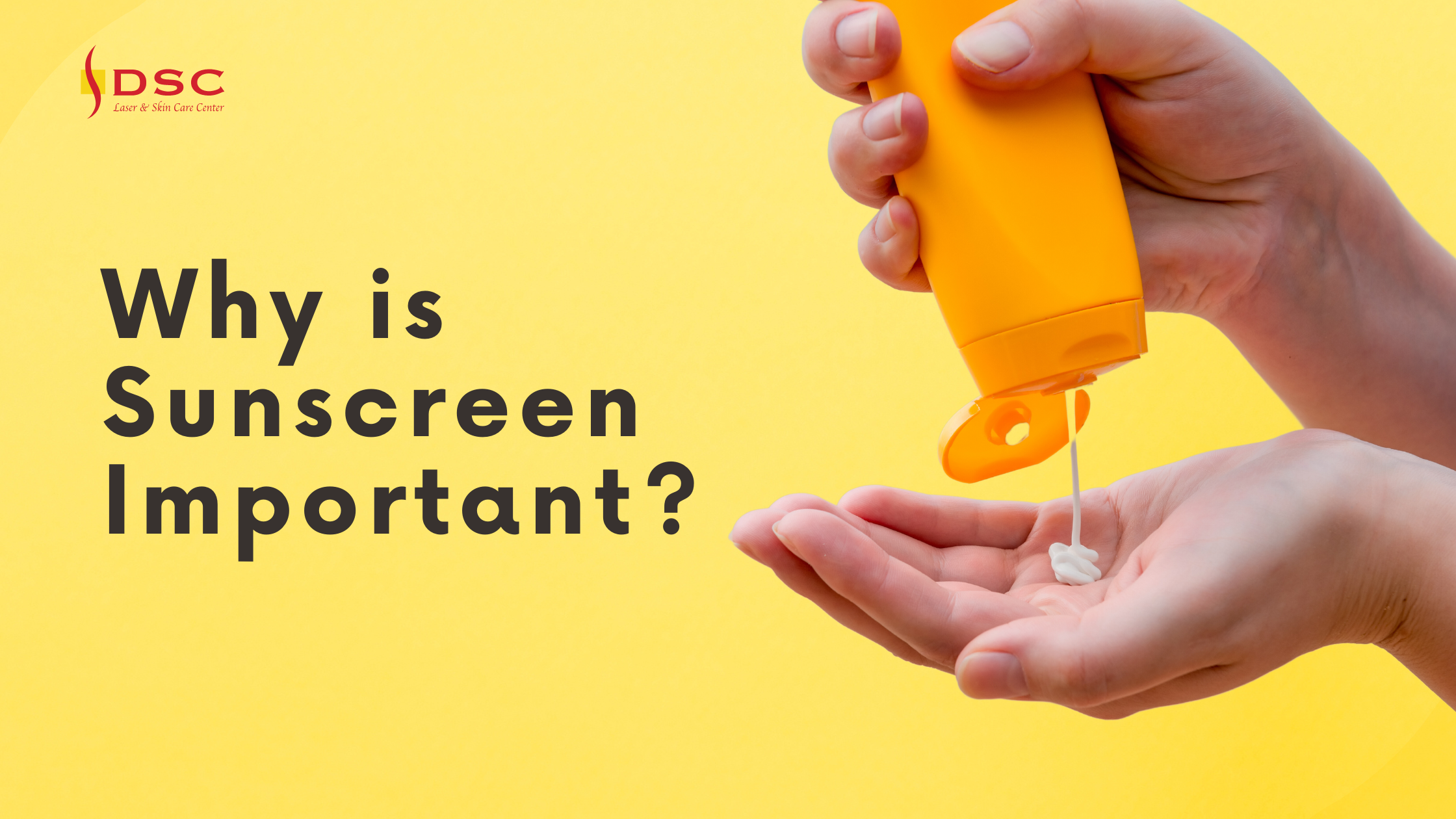You’ve probably been told that sunscreen is important to use, but why? While sunscreen is sold similarly to other skincare products and cosmetics in the US, it is actually a FDA-regulated product. The FDA regulates sunscreens to make sure they are as safe and effective as they are labeled, like drugs would be. As a laser & skin care center, we at DSC recommend daily use of sunscreen for its skin cancer prevention benefits, anti-aging benefits, and as a pre-treatment method for any and all laser treatments, especially those for pigmentation.
Why is it important to wear sunscreen?
Sunscreen reduces the risk of sunburn by reflecting or absorbing UV-B radiation from the sun. Repeated sunburns from unprotected sun exposure or prolonged use of tanning beds can lead to skin cancer, premature skin aging, and unwanted pigmentation on the skin.
What does SPF mean?
SPF stands for sun protection factor, and is a measure of how well a sunscreen blocks skin from sunburn. Several factors go into determining this, such as length of time of exposure, amount of exposure, skin type, geographic location, amount applied, etc. Generally, the higher the number, the better a sunscreen protects skin from sunburn. A common myth is that the SPF number is the amount of time one can spend in the sun before getting sunburnt, which is incorrect. Amount of solar radiation depends on time of year, time of day, amount of skin exposed, and many other factors, so length of time in the sun is not the most accurate way of thinking about SPF protection. For daily use, a minimum of at least SPF 15 is recommended. For fairer skin types or those concerned about pigmentation or hyperpigmentation, SPF 30-50 is recommended.
How much sunscreen should I use?
For daily use, it is recommended to apply a quarter of a teaspoon of SPF to the face and neck. For the entire body, one ounce is recommended. Short of measuring out these amounts, a good rule of thumb is the “two finger amount:” apply a thick line of sunscreen along the length of both your index finger and middle finger to approximate the 1/4 teaspoon amount needed for face and neck. Each sunscreen has different reapplication times; make sure to reapply as directed if outside for prolonged periods, or immediately after swimming.
What does broad-spectrum mean?
Broad-spectrum means a sunscreen protects against both UV-A and UV-B radiation. The sun emits two types of UV radiation: UV-A and UV-B. While UV-B radiation is the type that causes harmful sunburns, UV-A radiation causes skin aging. While all sunscreens protect against UV-B radiation, the label “broad-spectrum” in the US means a sunscreen protects against both types of UV exposure. In other countries, this may be designated differently, such as “PA+++.”
What’s the difference between a physical & chemical sunscreen?
All sunscreens contain active ingredients that “block” UV radiation. The difference in how the active ingredient in a sunscreen blocks UV is what classifies a sunscreen as a physical, chemical, or both. Sunscreens containing zinc oxide and titanium dioxide are considered physical sunscreens. These are typically what you associate with “life guard nose” or sunscreens that have a white cast. Sunscreens with other active ingredients, such as avobenzone, octocrylene, octinoxate, oxybenzone, etc., are known as chemical sunscreens. Sunscreens that contain at least one of both types are combination sunscreens.
DSC Laser & Skin Care Center
www.dscbeauty.com
(626)285-0800
info@dscbeauty.com
889 S. San Gabriel Blvd. San Gabriel, CA 91776
